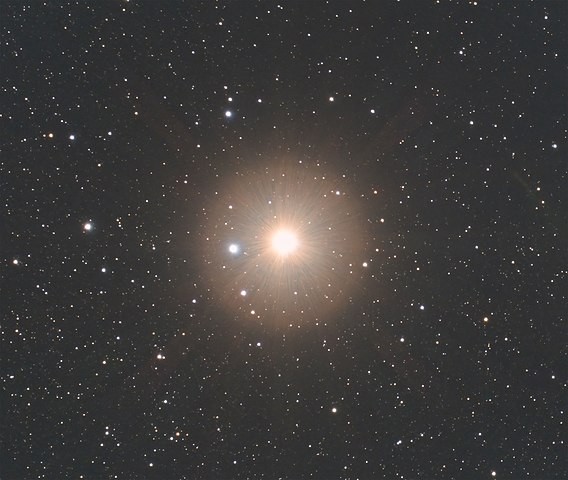New Star to Appear in Night Sky for the First Time in 80 Years, Will Be Visible for a Week

(Photo: Wikimedia Commons/Nova Dawn Astrophotography)
A new star will grace the night sky and explode anytime this year. It will only be visible for a week, so you watch out for it.
New Star T Coronae Borealis
A new star will emerge in the night sky for the first time in eight decades, providing a once-in-a-lifetime chance to see it with the unaided eye. T Coronae Borealis, also known as T CrB, is a star 3,000 light-years from Earth in the sky's Northern Hemisphere. It is scheduled to explode anytime this year, and the light from the explosion will last for a week, shining like a star.
T CrB is anticipated to shine as brightly as the North Star, Polaris, and will be found in the Corona Borealis constellation, which is semicircularly positioned between the Bootes and Hercules constellations.
Although NASA has not yet released a precise date for the cosmic spectacle, it is expected to occur between now and September of this year.
According to Cornell University, Reverend Francis Wollaston claimed to have seen a star with T CrB's exact coordinates at least four times a week in 1787.
According to Cornell, Abbott Burchard saw a rapidly ascending star in Corona Borealis that "shone with great light" and persisted for "many days" in a letter he wrote in 1217.
Burchard called the object a "Stella," another word for a star. Therefore, it seems unlikely that his observation was only a remark.
The majority of Nova explosions have a lifespan of thousands of years, but T CrB is special since it finishes the entire process in just one week. Before it dims again, maybe for another 80 years, the brilliance of the Nova outburst will peak and "should be visible to the unaided eye for several days and just over a week with binoculars," according to NASA.
ALSO READ: James Webb Space Telescope Data Can Help Solve 'Hubble Tension' Mystery
Betelgeuse Star Show Boiling Motion
Betelgeuse is a red supergiant star in the constellation Orion. Recent examinations have raised questions, implying that it is rotating at a rate far quicker than one would expect for a star of its size. A recent simulation shows the notorious red supergiant rotating tens of thousands of miles per hour.
Two colors were displayed in the simulation: red and blue. It is said that the red spots represent the parts of the supergiant star traveling toward Earth, and the blue patches represent the parts traveling away from it.
Betelgeuse has exhibited peculiar conduct. It has become duller and more like Bellatrix, the third brightest star in Orion. Regaining its brightness, the red star appears to be recovering from the "great dimming."
For a few days in 2023, Betelgeuse glowed brighter than any star in Orion that astronomers had seen. On both occasions, people wondered if it would explode and disappear.
Betelgeuse can glow almost as brilliantly as Rigel, the constellation's fourth-brightest blue star, at certain times, while at other times, it will shine noticeably fainter. Pulses come and go, not as intense or persistent as that of Mira, the "star of wonder," which German priest David Fabricius discovered in 1596.
On the other hand, stars occasionally experience brief bursts of intense brightness. Supernovas, produced when a complete star explodes to annihilate itself, are the rarest and most vivid stars.
No comments:
Post a Comment